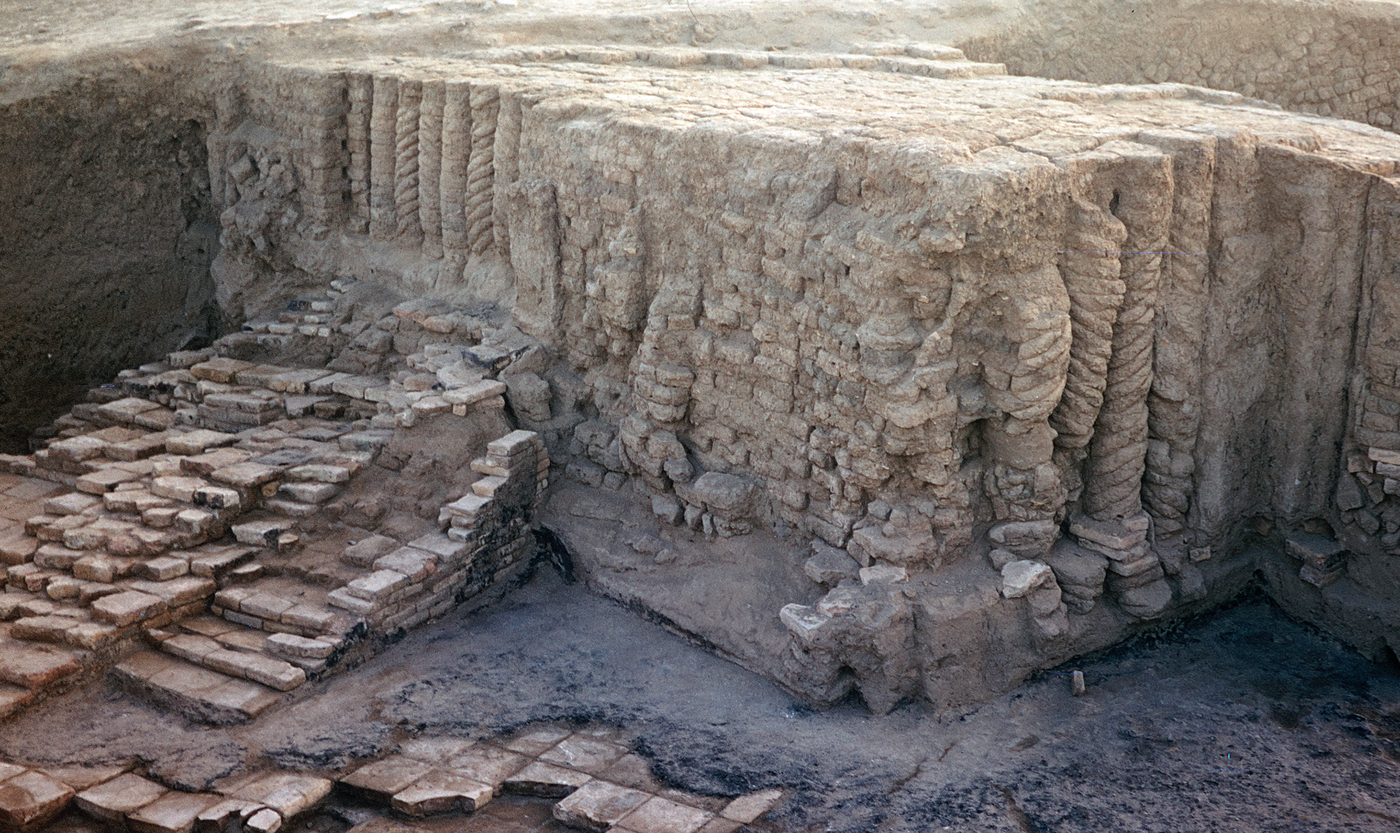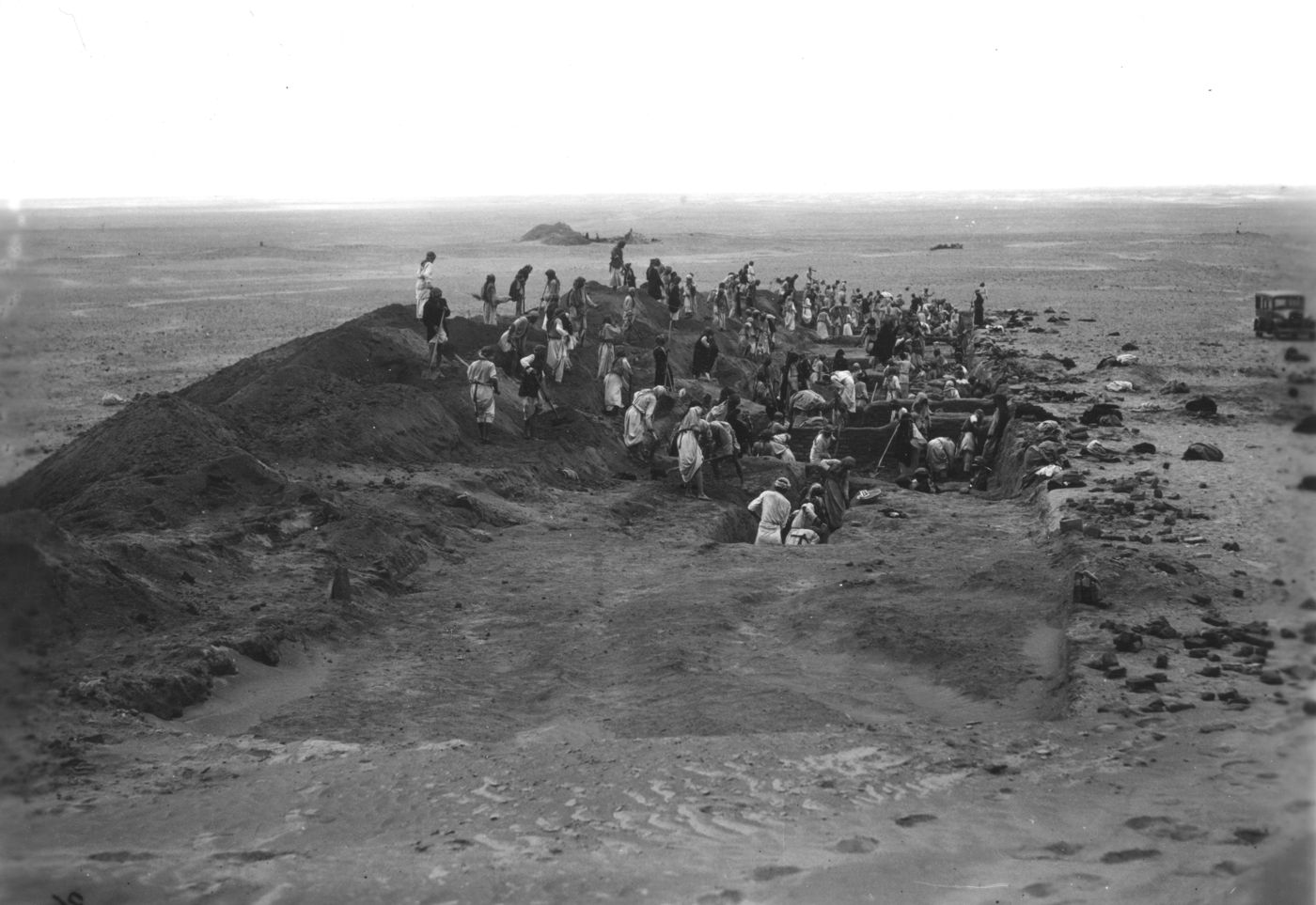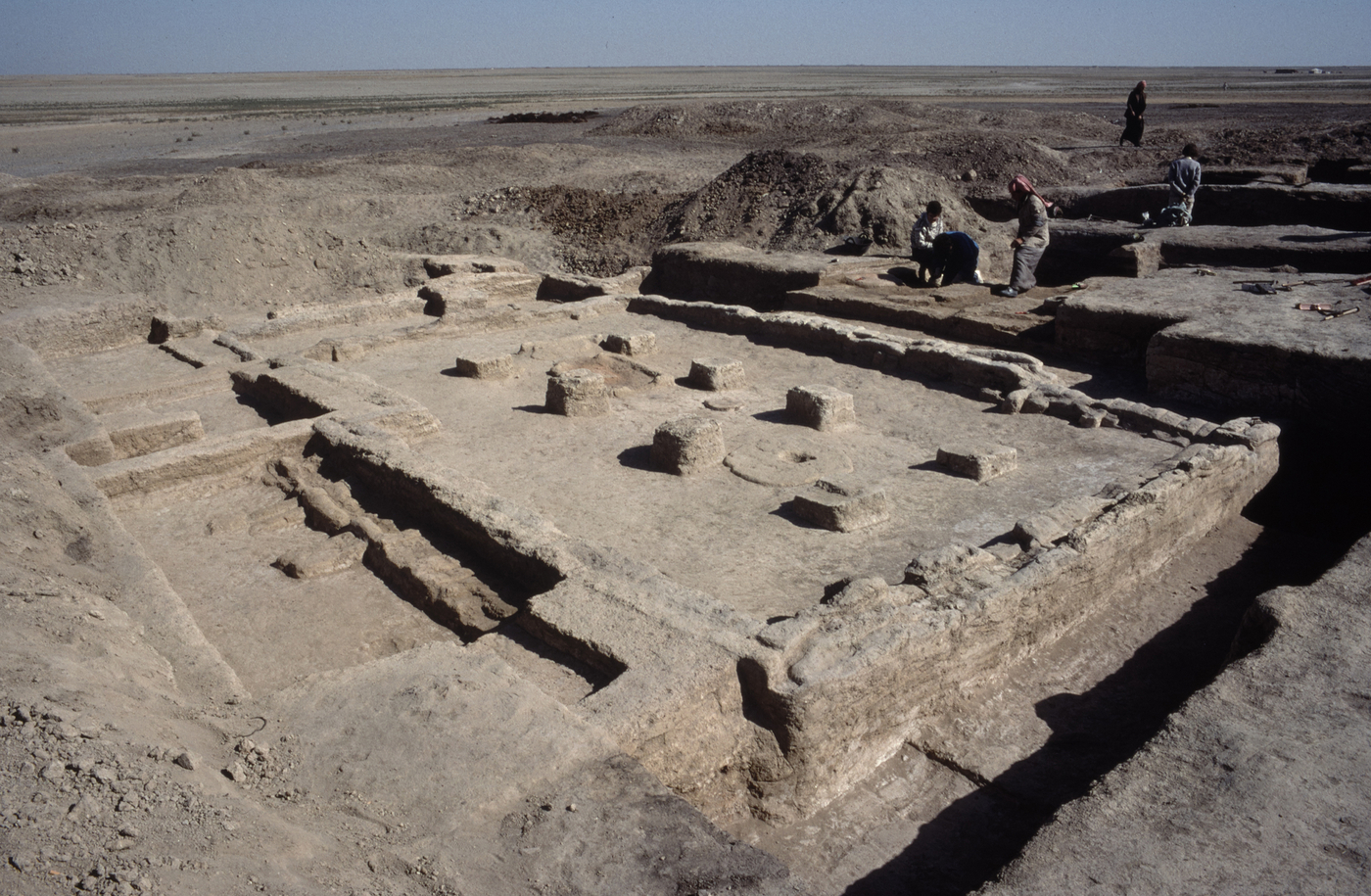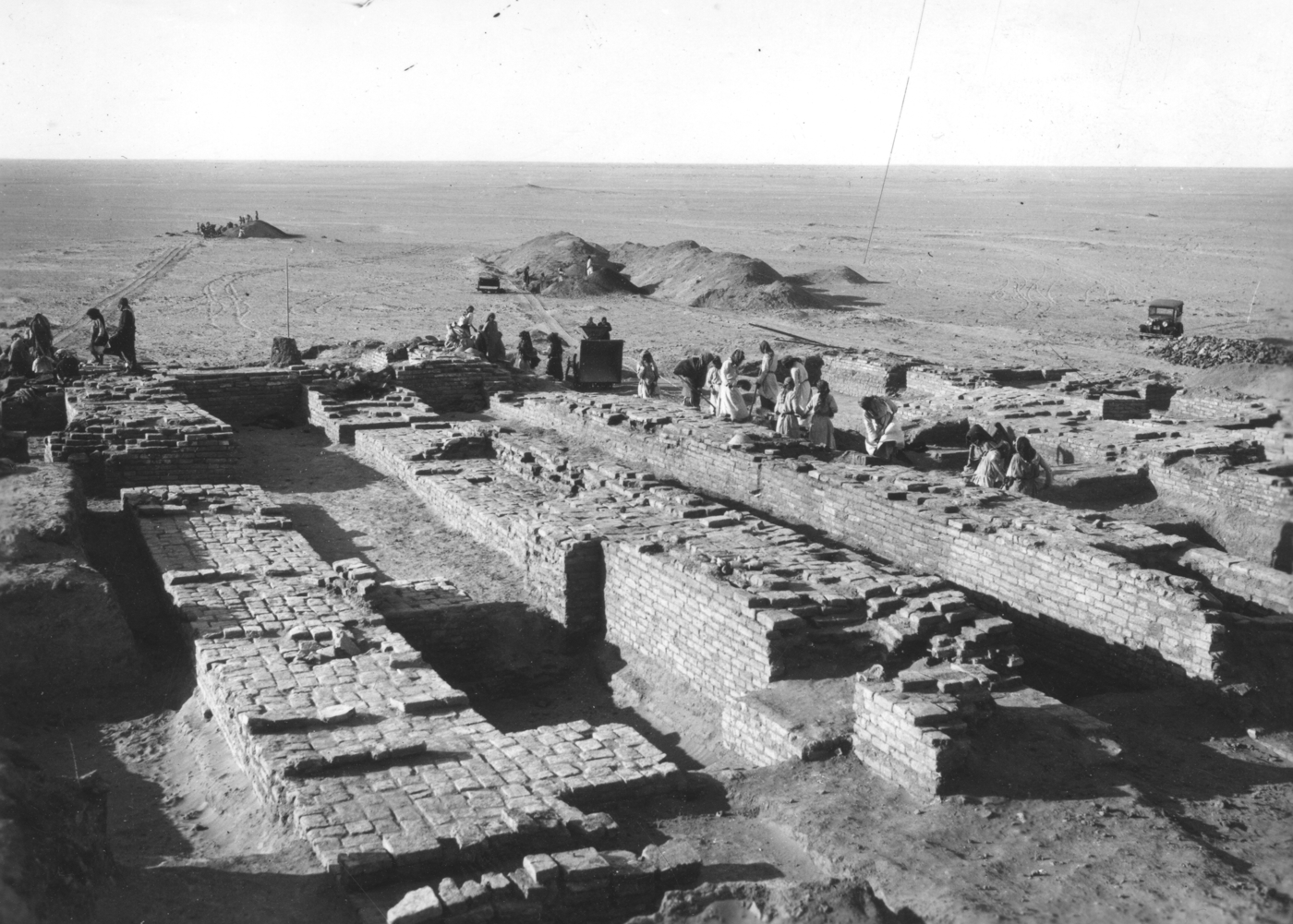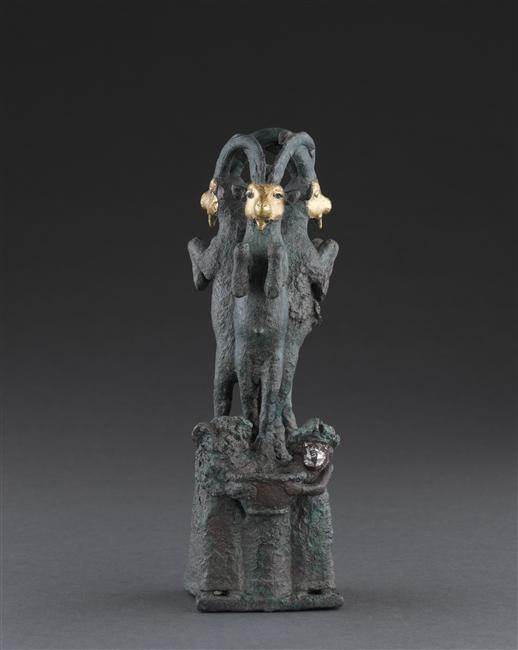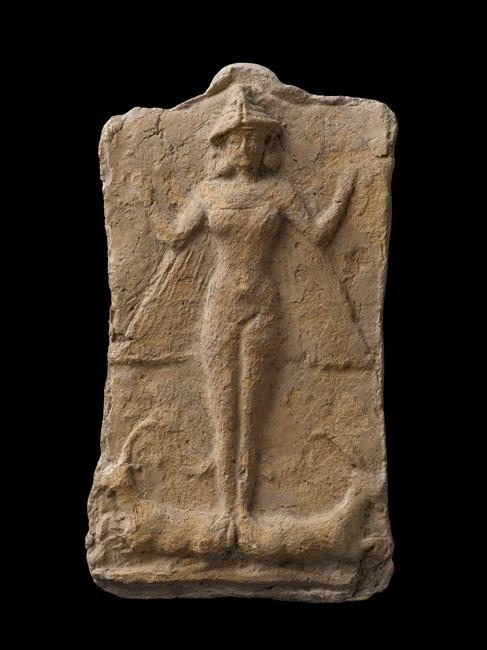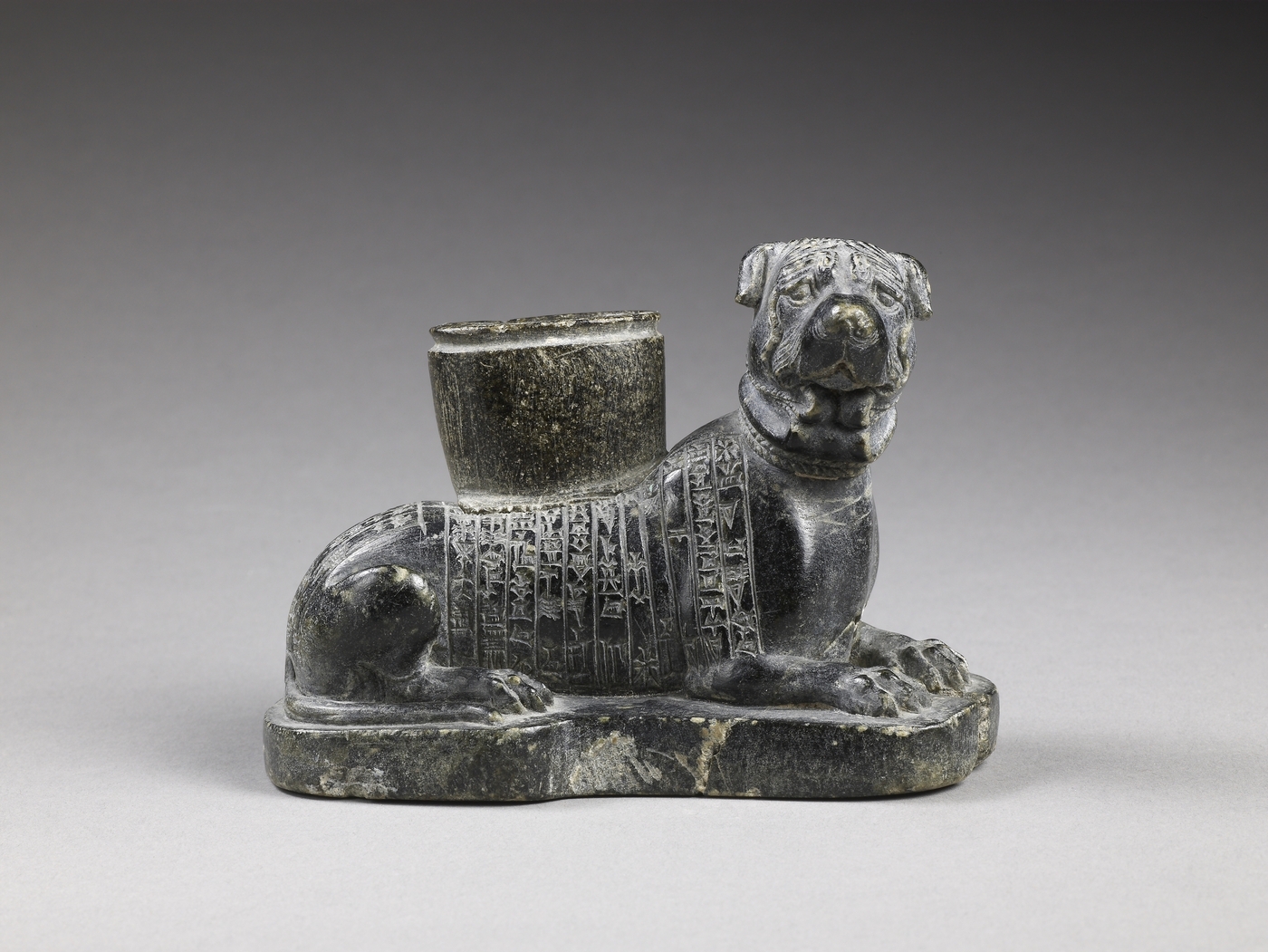Larsa
Tell es-Senkereh, one of the largest archaeological sites in Iraq, was formerly Larsa, capital of Mesopotamia. Occupied for more than 6,000 years, Larsa and the nearby site of Tell el-'Oueili shed light on the ancient civilisations of the Near East.

Between the Tigris and the Euphrates, surrounded by the plain of Lower Mesopotamia, a cradle of civilization, the ruins of ancient Larsa cover a vast 200-hectare archaeological site. The millennia-old city, which reached its peak in the early second millennium BCE, was excavated by French teams from 1933 to 1989. French archaeologists resumed their work there in 2019.
Archaeological research
The Tell es-Senkereh site was surveyed by William Kennett Loftus in 1854 and Walter Andrae in 1903, and the first excavations were carried out by André Parrot in 1933. Thirty years later he returned to lead two campaigns in 1967, which were followed by two others, in 1969 and 1970, directed by Jean-Claude Margueron. In 1974, Jean-Louis Huot was made director of the Mission Archéologique française in Larsa. He led eight campaigns until 1989. In 2019, excavations resumed under Régis Vallet.
History of the site
At Tell es-Senkereh, occupied from the end of the 7th millennium BCE, the deeply buried remains of the prehistoric and protohistoric periods are yet to be explored. A Sumerian city-state of major importance, the kingdom of Larsa reached the height of its powers in the Amorite period at the beginning of the 2nd millennium. It successfully challenged the supremacy of Isin and set out to conquer the country. The city was at its height during the reign of Rim-Sin (1822-1763) and triumphed over its rival city-state in 1794 BCE. Larsa's hegemony was short-lived. Hammurabi, king of Babylon, took the city in 1763 BCE. Thereafter, Larsa never regained its former power and influence. The city famous for the thousand-year-old temple of the sun god Shamash, Ebabbar, was occupied until the beginning of the Common Era.
A brilliant city
The Tell es-Senkereh site contains countless buildings. The first two campaigns uncovered the Amorite palace of King Nur-Adad. Subsequent excavations, from 1970 to 1985, centred on the Ebabbar ("shining temple"), the famous temple of Shamash, revealing the remains of the city's religious centre, including a ziggurat, in an area covering nearly 300 square metres. From 1985, the use of aerial photography made it possible to conduct a research programme on the urban planning of the former capital to better understand its organisation. New excavations were also carried out on dwellings, including large 18th-century BCE Paleo-Babylonian houses and on a small 3rd-millennium palace, the “B33" building.
.
Tell el ‘Oueili
Tell el-'Oueili is a small prehistoric satellite site of Larsa. Discovered in 1967, it was excavated from 1976 to 1989. The excavations at 'Oueili shed light on the end of prehistory in Lower Mesopotamia by revealing the earliest human settlement in the region, dated to the end of the 7th millennium BCE. This brought to light an unknown phase of Ubaid culture (Ubaid 0), which emerged half a millennium earlier than previously thought. The remains also reveal changes in preservation techniques and the emergence of monumental architecture during the long Ubaid period, from the end of the 7th millennium to the 5th millennium.
The ancient societies of Lower Mesopotamia
The excavations carried out in Larsa and ‘Oueili shed light on the ancient civilisations of Lower Mesopotamia, from the first village communities which developed a rich material culture, to the beginning of the Common Era. For millennia, Mesopotamian societies were at the forefront of innovation and developed a craft industry that guaranteed their prosperity, as revealed by several outstanding finds. Burial practices identified in Larsa also provide important clues to help us understand these ancient communities with multiple origins.
Life with the mission
Archaeologists who took part in an excavation campaign in Larsa and ‘Oueili remember it as a rewarding experience. In the middle of a desert populated by nomadic tribes, the mission was based in a house on the edge of Larsa, cut off from the rest of the world. Archaeologists worked there for three months, studying and describing their finds, without the use of computers. The quality of the sites and results made it easier to cope with everyday inconveniencies, the discomfort, isolation, harsh weather, lack of pastimes and the sense of fatigue brought on by hard work.
The archives of the Larsa and Tell el-'Oueili archaeological mission
The archive department of the MSH Mondes provides online access to the archives of the archaeological mission in Larsa and Tell el-’Oueili (1970-1989)
Larsa in the collections of the Musée du Louvre
The Oriental Antiquities department at the Musée du Louvre conserves and presents collections from the Larsa archaeological site: “Worshipper of Larsa" statue, “Ishtar Vase", Plaque with a winged naked goddess
Combating the theft and illicit trafficking of cultural property is one of the priorities of the French Ministry of Culture, which pays close attention to these issues, in line with its regulatory responsibility to control the movement of cultural property.





